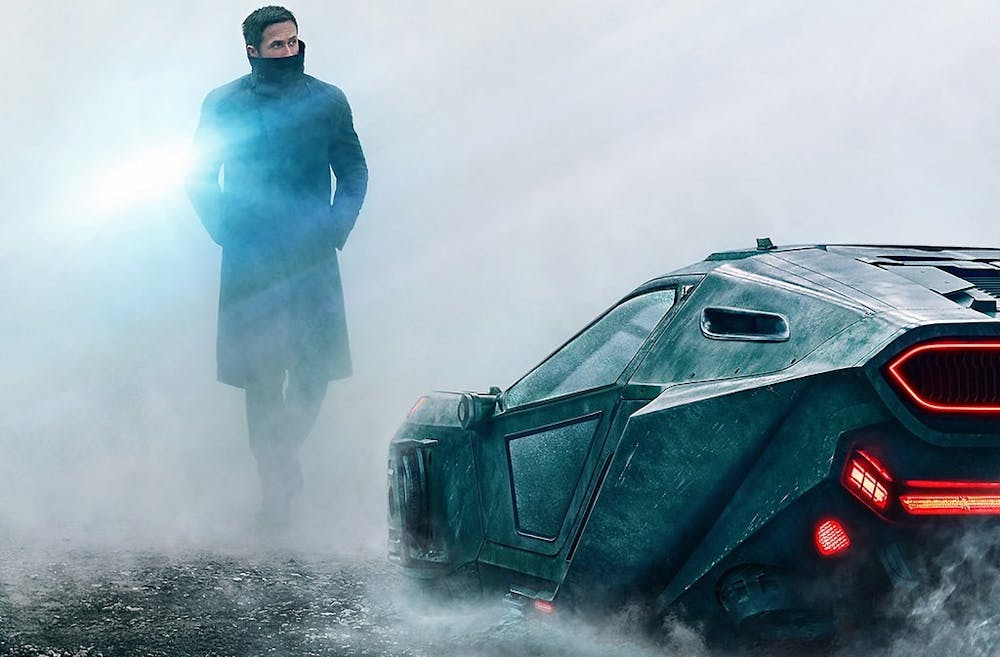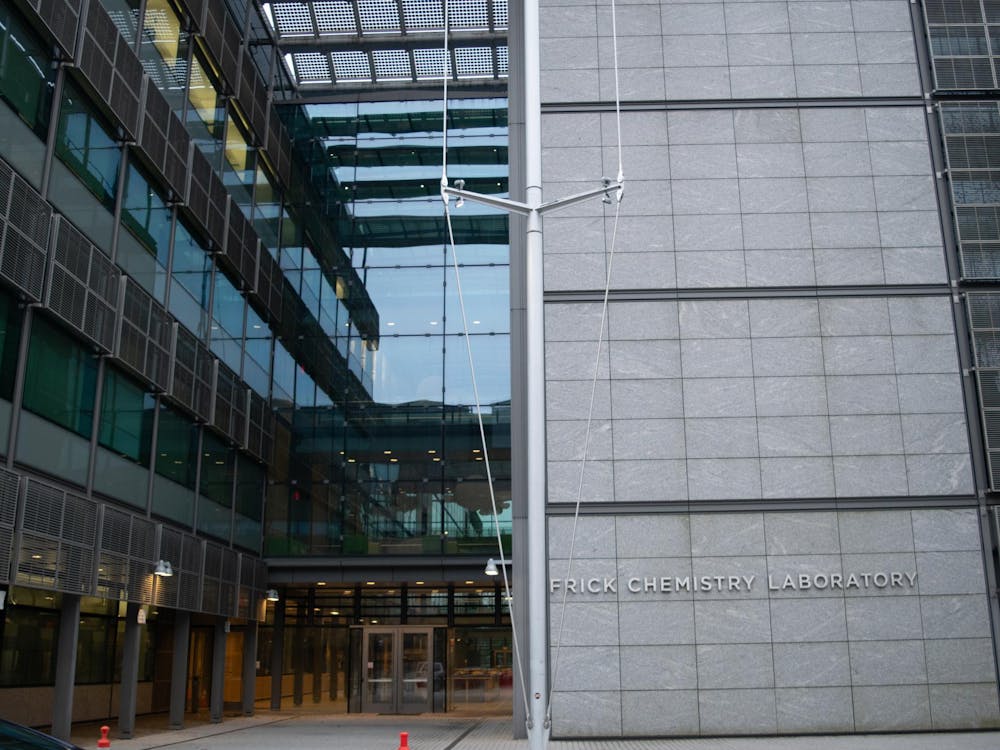Creating a sequel to a cult classic is a hard task. This task is even harder when the original movie is itself an adaptation of a much-acclaimed sci-fi novel, Philip K. Dick’s “Do Androids Dream of Electric Sheep?” It probably doesn’t come as a surprise, then, that “Blade Runner 2049” does not match the quality of its predecessors, even though it’s a decent action movie. Despite having the potential to level up to and even surpass the original, the film fails to fully develop the themes that made the original “Blade Runner” so captivating.
At first glance, the film has everything one would expect from a successful sequel to the original movie: replicants; blade runners; evil corporations; and giant, monolithic organizations that seemingly have little regard for the individuals whom they are supposed to serve. The protagonist (played by Ryan Gosling) is a replicant, KD6.3-7 (or K for short), who is employed by the Los Angeles Police Department to retire other replicants.
We are told within the first few minutes of the movie that the Tyrell Corporation has gone bankrupt and been bought by the sinister Wallace Corporation. Niander Wallace, the owner of the company, designs new replicants that are more obedient. Some of these new androids are given the duty of “retiring” the older replicants, who are considered to be too dangerous for public safety. While on a mission to identify and kill a rogue replicant, K discovers a secret that threatens to upend the established order and makes him question his own identity.
The visuals in “Blade Runner” are its main strength. The picturesque scenery we are treated to is the film’s highlight; Roger Deakins’ work as a cinematographer is nothing short of superb. The futuristic Los Angeles landscapes covered in endless grey mist, ruins of the old world after the climate apocalypse, and Wallace’s stunning golden room captivate the audience in a way that even the original could not. More an adventure movie than a film noir, “Blade Runner 2049” shines with its spacious and brightly illuminated settings. The score, composed by Hans Zimmer, is a perfect continuation of the original soundtrack — sometimes dynamic, sometimes calming, but always unsettling.
The movie is, in many ways, a return to the original novel. When K interviews an older police officer to learn the whereabouts of Deckard (the role reprised by Harrison Ford), the officer makes an origami sheep — an ambiguous reference to Dick’s novel that can be interpreted in many ways.
Like the novel, the movie is as concerned with humans becoming machines as with machines becoming human. For starters, the chief antagonist, Niander Wallace, is a cyborg who requires cybernetic implants to be able to see. Moreover, the movie also questions the boundary between the real and the artificial through the relationship of K and his “wife” Joi (played by Ana de Armas). Their interactions are often the philosophical highlight of the movie. Even though Joi does her best “to be real for [K],” we are painfully aware that she is just a computer program set up to be what he wants her to be, even if that is to be real. This realization makes us uneasy watching their relationship grow and develop. However heartwarming the story might be, the underlying artificiality undermines the authenticity of their relationship. This tension between the real and the unreal defines the movie and greatly enhances one’s viewing experience.
The movie also continues to use the motifs and cinematic techniques of the original “Blade Runner,” and does so artfully. Classical music is still a conduit to self-discovery; rain is still a symbol of impermanence. The theological undertones of the previous movie are continued with frequent references to heaven and hell and the godlike power of creating life. Compared to the original, the language of the script is even more poetic.
Given everything good about “Blade Runner 2049,” one would expect it would turn out to be even better than the original. After watching the movie, I found myself grappling with the question of why that was not the case. The movie feels bland and soulless; the moral and philosophical questions that drove the first movie fail to capture the viewer’s interest now. The main reason for this failure to engage the audience appears to be that the searing questions of the franchise — “Are replicants human?,” “What rights should they be accorded?,” “Where do we draw the line between the real and the artificial?” — are no longer front and center. Even when the movie tackles these questions head-on, the answers provided are often confused and absurd.

“Do Androids Dream of Electric Sheep?” was a book that concerned itself not just with the humanity of androids but with the nature of reality in an increasingly technological world. The original “Blade Runner” took this abstract, often surreal masterpiece and grounded it in reality, all the while not losing sight of the bigger questions the book was asking. “Blade Runner 2049” had the potential to be as great as its predecessors, but we are constantly denied a deeper, more probing exploration of the movie’s themes.
One of the most promising characters in the movie is Joi. The relationship between Joi and K is a great opportunity to examine the nature of our new virtual reality. Yet the movie never offers us a clear answer as to what this relationship means. Instead, it vacillates between presenting their story as a classical romance on the one hand and trying to undermine its own narrative by pointing out Joi’s artificiality on the other.
Even when the film does offer clear-cut answers, they are not satisfying. For instance, even when the movie decides to answer the question of what distinguishes replicants from human beings (an answer I cannot elaborate because of the spoiler-free nature of this review), it is perplexing and ludicrous.
Moreover, while the sequel’s focus on political and ethical questions seems to be promising at first, it simply does not carry through. Lieutenant Joshi’s soliloquy about protecting order at all costs — even if it will leave a great minority of human beings in servitude — resonates with audiences in the political climate of 2020, as the police increasingly come under scrutiny as protectors of an unjust order.

The character of K is also compelling. A cop who is forced to participate in the oppression of his own kind, K is the perfect vehicle to explore the psychology of the members of the police force who are forced to be participants in the disenfranchisement of the communities to which they belong. At the end of the movie, however, one does not leave the theater (or one’s room) with any new insight on these pressing, novel questions.
“Blade Runner 2049” is an action movie that is worth watching if you have free time. The story is coherent and immersive, and if you are an international student like me, you might appreciate that the cast is also international — more so than you would expect from a Hollywood movie, at any rate. However, viewers who are expecting a second “Blade Runner” are bound to be disappointed. Even though the movie is promising at the start, it does not reach the level of profundity of the original. Much like its characters, “Blade Runner 2049” tries — and fails — to be real.








